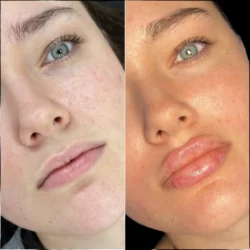Healthy mobility is a vital part of a child’s physical and brain development. From learning to roll over and crawl to walking, running, and participating in play, movement shapes a child’s growth in powerful ways. For some children, developmental delays, muscle weakness, injuries, or neurological conditions make these milestones harder to achieve. This is where kids physiotherapy becomes an essential part of their developmental journey. With the guidance of specialized pediatric physiotherapists, children can improve strength, coordination, balance, flexibility, and overall independence.
Unlike adult physiotherapy, pediatric care is designed to meet the unique needs of growing muscles, bones, and developing motor skills. The goal is not just to treat a condition, but to help children reach their highest potential in everyday activities.
Why Kids Physiotherapy Matters
Children learn through movement. When a child experiences difficulty controlling movements, lacks balance, avoids physical play, or fails to meet developmental milestones, it can affect not only physical abilities but also emotional and social confidence. Kids physiotherapy helps bridge these gaps by building foundational motor skills that allow children to participate in school activities, sports, and daily life without limitations.
Physiotherapy supports children with a wide range of concerns, including:
- Developmental delays
- Cerebral palsy and neurological conditions
- Muscle weakness or imbalance
- Sports injuries
- Flat feet, clubfoot, and posture issues
- Sensory and coordination difficulties
- Autism spectrum-related motor challenges
- Recovery after fractures or surgery
Early support ensures better outcomes and prevents long-lasting physical limitations.
How Physiotherapy Improves Mobility
Mobility involves more than just movement. It requires brain coordination, muscle control, joint stability, and sensory awareness. Kids physiotherapy addresses all these factors together through structured programs designed to:
- Strengthen weak muscles
- Improve joint alignment and posture
- Enhance balance and coordination
- Increase flexibility and range of motion
- Build endurance for physical activity
- Encourage proper walking and running patterns
Therapists use specific exercises and guided play to help children move more confidently and independently in daily life.
The Role of Play in Pediatric Physiotherapy
One of the defining features of kids physiotherapy is its play-based approach. Children do not experience therapy as a clinical task; instead, therapists use games, toys, obstacle courses, and sensory tools to make movement enjoyable. Play encourages children to participate willingly, helping them build motor skills without feeling pressured or stressed.
Examples include:
- Balance games using soft mats or balance beams
- Obstacle challenges to improve strength and coordination
- Ball games to enhance eye-hand coordination
- Animal walks to build core stability
- Sensory activities to improve awareness and motor planning
This approach motivates progress, reduces fear, and makes learning movement a fun and natural experience.
Physiotherapy Techniques Used for Children
Pediatric physiotherapists use carefully selected techniques based on a child’s age, diagnosis, and individual developmental needs. These methods are designed to improve strength, coordination, mobility, and overall functional abilities. Each treatment plan is customized to support natural growth and help children achieve important motor milestones. Some commonly used physiotherapy techniques for children include specialized exercises, play-based therapy, manual techniques, and sensory-motor training.
1. Manual Therapy
Gentle hands-on techniques to improve joint function, muscle tone, and mobility.
2. Strength and Endurance Training
Targeted exercises to build strong core, arm, and leg muscles, enabling better posture, walking, and active play.
3. Neurodevelopmental Treatment (NDT)
Used for children with neurological conditions to improve movement control and learning.
4. Gait Training
Helps children with walking difficulties develop a proper stride through exercises, braces, or supportive devices if needed.
5. Sensory-Motor Integration
Combines sensory activities with movement to improve coordination and balance, especially for children with sensory challenges.
Each technique is tailored to a child’s developmental needs, ensuring therapy feels safe, comfortable, and engaging.
How Kids Physiotherapy Helps Everyday Activities
The impact of physiotherapy extends beyond exercises. As children begin to move better, everyday tasks also become easier. Benefits include:
- Improved walking stability and posture
- Ability to participate in school activities and sports
- Greater independence in self-care tasks
- Reduced risk of falls and future injuries
- Increased confidence in physical play
- Better endurance for daily routines
Parents often notice that children become more active, motivated, and socially engaged because they feel capable of participating in activities with peers.
When Should Parents Seek Kids Physiotherapy?
Early intervention leads to better long-term outcomes. Parents should consider professional assessment if a child:
- Misses developmental milestones like sitting, crawling or walking
- Shows poor coordination or frequent falls
- Struggles with posture or walks on toes
- Complains of pain during physical activity
- Has difficulty using both sides of the body equally
- Avoids active play or tires easily
- Was diagnosed with a neurological or orthopedic condition
Even mild concerns can benefit from timely evaluation.
Final Thoughts
Kids physiotherapy plays a significant role in promoting healthy growth, movement, and confidence. By addressing muscular, neurological, and coordination challenges early on, children gain the support they need to develop essential motor skills and enjoy an active life. Through guided play, specialized exercises, and personalized treatment, physiotherapy helps young children move, explore, and thrive.


